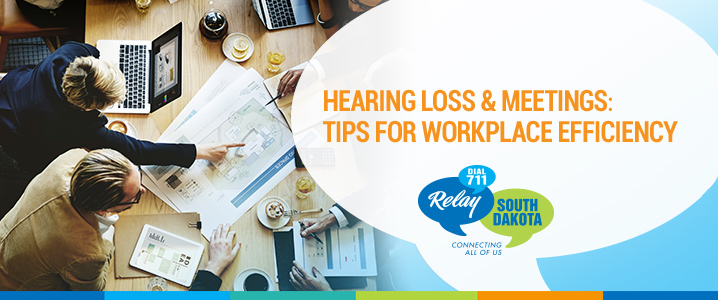
Hearing Loss & Meetings: Tips for Workplace Efficiency

Being hard-of-hearing in a primarily hearing workplace doesn’t need to be difficult to navigate. Employers and coworkers can work together to better accommodate with each other —particularly in meetings and workplace gatherings.
Here are some ways office workers can improve meetings when it comes to coworkers with hearing loss.
Optimize your space
The optimal meeting space for coworkers with hearing loss is one with minimal echo and potential for reverb, to cut back on background noise, as well as one with seating conducive to eye contact. Many individuals with hearing loss rely on face-to-face connection to get context, lip movement and facial expressions needed to gain a full understanding of the topic at hand. Select meeting rooms with round tables, for example.
Set clear expectations
From meeting time, to meeting location, to meeting purpose—make sure you set clear expectations to ensure coworkers with hearing loss can confidently in attending. Set a formal agenda for the meeting and distribute ahead of time. This will allow your coworker with hearing loss to adequately prep so he or she doesn’t feel behind from the start.
Make use of tech
Sometimes one of the best solutions in equalizing everyone’s meeting experience when it comes to hard-of-hearing individuals is to make use of technological enhancements, such as amplifiers, FM systems or even real-time captioning. Ensure that someone in the meeting is taking good notes and can distribute comprehensive minutes at the end of the session for instant recall.
Avoid phone meetings
In many workplaces, meetings with satellite offices or clients over the phone can be common—but when it comes to meeting attendees with hearing loss, this can be problematic. Consider engaging in other methods of long-distance meeting, such as video chat or even captioned phone conversations in order to keep deaf or hard-of-hearing employees in on the discussion.
Accommodate in training
Your workplace may have the occasional training session when new practices are being implemented or new software is being rolled out company-wide. Remember to make any video training materials captioned—and account for takeaways/handouts to be distributed post-session so that deaf or hard-of-hearing employees are able to take part and get the full depth of information from the training.
Found in: Lifestyle

